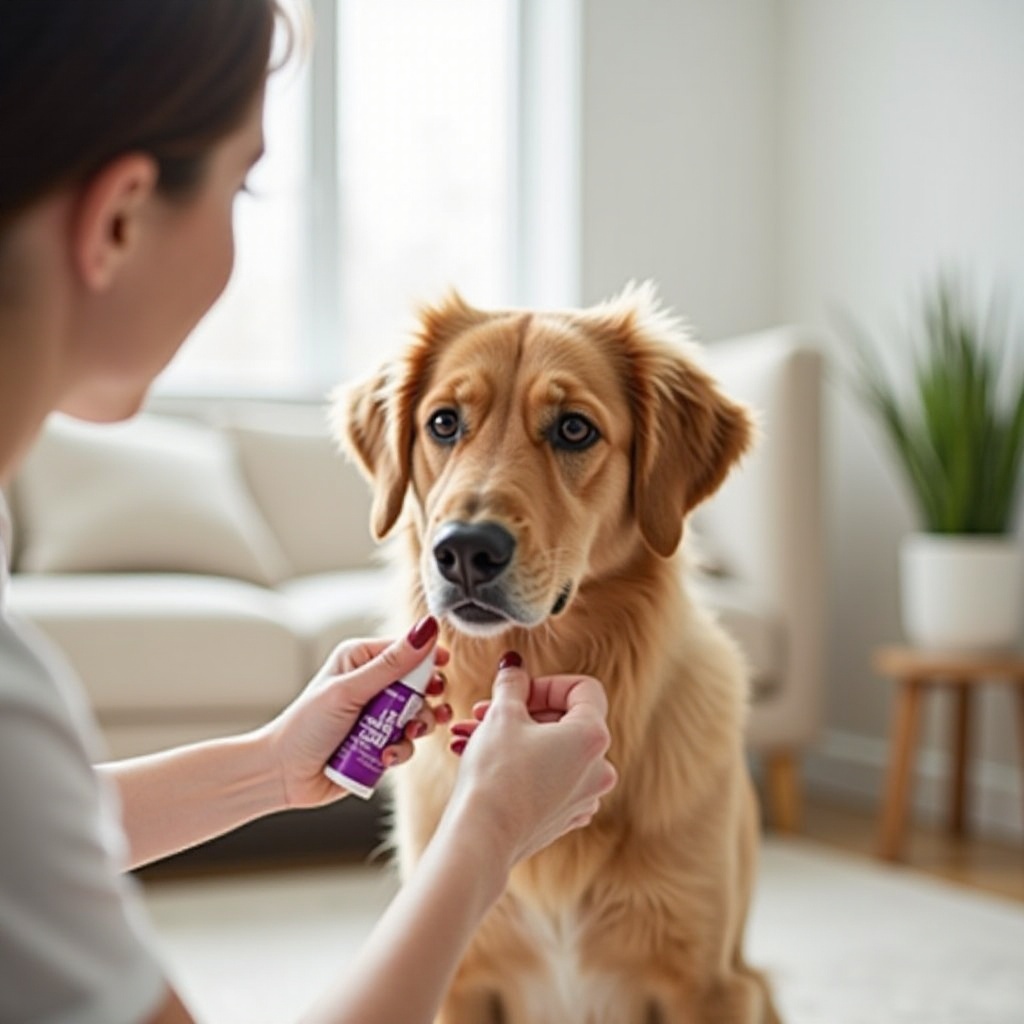Introduction
Fleas and ticks are more than just a nuisance for dogs. They pose significant health risks, including skin infections, allergic reactions, and diseases like Lyme disease. Ensuring that your dog receives regular flea and tick treatment is crucial for their well-being. In this comprehensive guide, we’ll walk you through everything you need to know about tackling these pesky parasites. We’ll cover the different types of treatments available and provide step-by-step instructions to ensure the process is as smooth and effective as possible.

Understanding Flea and Tick Infestation
Fleas and ticks are external parasites that feed on the blood of their hosts. Fleas can jump from one host to another, making it easy for them to spread rapidly, while ticks latch onto a host and stay until they are fully engorged. Both can be found in various environments, from wooded areas to your own backyard. Infestations are common and can cause significant distress to your pet.
It’s essential to recognize the signs of an infestation early. These include excessive scratching, visible pests on their skin, patches of hair loss, and inflamed or scabbed skin. Understanding the life cycle of these parasites can also aid in effectively combating them. Fleas have four life stages: egg, larva, pupa, and adult. Ticks follow a similar pattern, though they spend much of their life cycle waiting for a new host.
Choosing the Right Flea and Tick Treatment
Selecting the right flea and tick treatment for your dog is crucial. There are several types, including topical treatments, oral medications, and collars. Each type has its pros and cons, and the best choice depends on your dog’s individual needs, age, weight, and health status. Consult your veterinarian to determine the most suitable option.
Topical treatments are applied directly to the skin and provide quick results. Oral medications, in pill form, offer long-lasting protection and are often easier to administer to dogs who dislike topical applications. Flea and tick collars work by releasing substances that repel and kill the pests over an extended period. Be sure to read labels meticulously and follow recommended guidelines to avoid any potential side effects.
How to Apply Topical Flea and Tick Treatments
Preparing for Application
Before applying a topical treatment, gather everything you’ll need: the treatment itself, gloves, and perhaps some treats to reward your dog afterwards. Ensure you choose a well-lit area where you and your dog can remain calm and comfortable. Check your dog’s skin for any abrasions or wounds, which should be avoided during application.
Detailed Application Instructions
- Part your dog’s fur at the base of the neck until you can see the skin.
- Place the tip of the applicator on the skin and squeeze out the contents.
- Apply in a single spot or along their back, depending on the product’s instructions.
- Ensure the product is applied directly to the skin and not just the fur.
It’s vital to keep the dog still during and shortly after application to prevent the treatment from being licked off or spread.
Post-Application Care
For the first 24 hours after application, avoid bathing your dog to allow the product to absorb and spread across their skin. Keep an eye on them to ensure they do not experience any adverse reactions, such as excessive drooling, skin irritation, or lethargy. Contact your vet immediately if you notice any unusual behavior.
Administering Oral Flea and Tick Medications
Types of Oral Medications
Oral medications come in various forms, including pills, chews, and tablets. Some are designed for monthly administration, while others may provide longer-lasting protection. They work by entering your dog’s bloodstream and killing fleas or ticks when they bite.
Administering Oral Medication
- Follow the dosage instructions provided by your veterinarian or on the package.
- Many oral medications are flavored to make them more palatable.
- If necessary, hide the medication in a treat or a bit of food to encourage consumption.
- Ensure your dog consumes the medication fully.
Monitoring Your Dog Post-Treatment
After administering, watch your dog for any side effects such as vomiting, diarrhea, or changes in behavior. These medications are generally safe, but individual reactions can vary. Report any concerns to your veterinarian.
Utilizing Flea and Tick Collars
Selecting the Right Collar
Choose a collar that is suitable for your dog’s size and weight. Look for collars that provide long-lasting protection and check if they are water-resistant, especially if your dog enjoys swimming or bathing frequently.
Instructions for Safe and Effective Use
- Read the instructions carefully before placing the collar on your dog.
- Fit the collar snugly but comfortably around your dog’s neck. There should be enough room to fit two fingers between the collar and the neck.
- Cut off any excess length of the collar to prevent it from being chewed.
- Replace the collar as directed (usually every 6-8 months).

Conclusion
Applying flea and tick treatment to your dog is a vital aspect of their health care. By choosing the right product and following application instructions meticulously, you can protect your pet from the discomfort and dangers posed by these parasites. Regular monitoring and adherence to a treatment schedule can keep your dog happy and healthy, free from the troubles of fleas and ticks.

Frequently Asked Questions
How often should I apply flea and tick treatment to my dog?
The frequency of application depends on the specific product used. Typically, topical treatments are applied monthly, while some oral medications and collars can provide protection for several months. Always follow the product’s guidelines and your veterinarian’s advice.
Can I use products meant for other pets on my dog?
No, it’s essential to use treatments specifically formulated for dogs. Products designed for other animals, such as cats, can contain ingredients that are harmful to dogs.
What should I do if my dog has an adverse reaction to the treatment?
If your dog shows signs of an adverse reaction, such as swelling, vomiting, or excessive drooling, wash the area with mild soap and water if it’s a topical treatment, and contact your veterinarian immediately for further advice.
